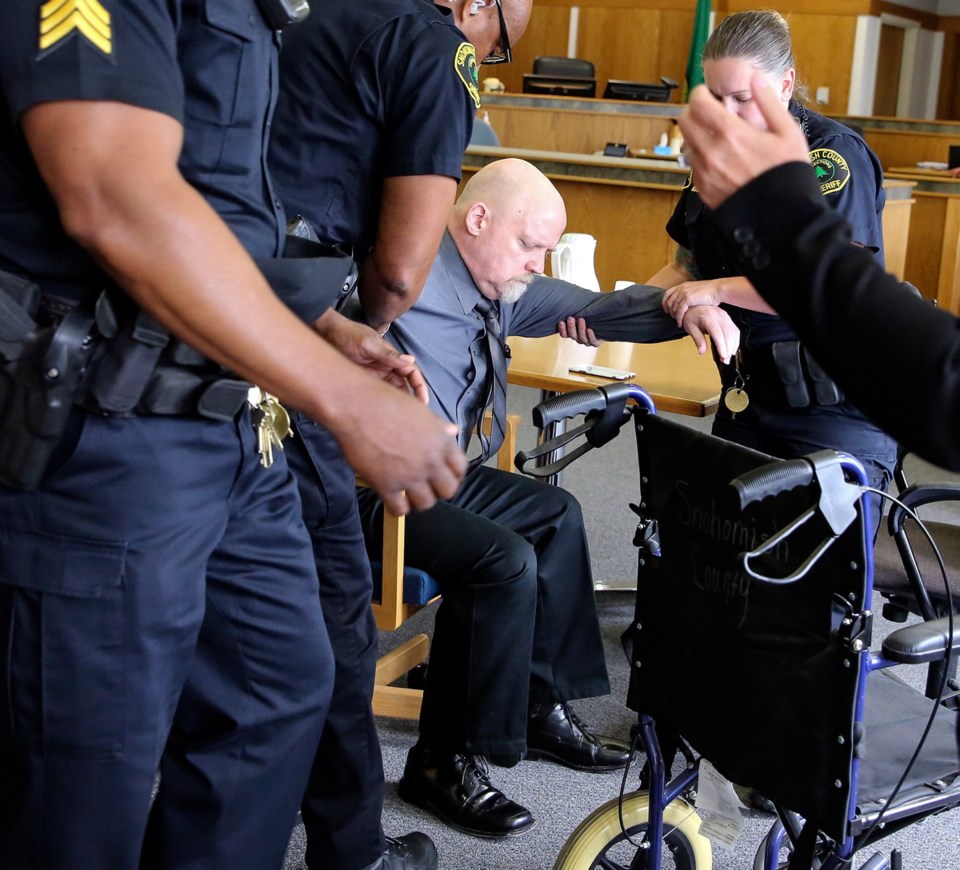The conviction of a Washington state man for the killings of two people from Saanich in 1987 has opened a major door for law enforcement. Let’s hope that door stays open, for the sake of the families involved, and for the sake of justice.
The murders of Tanya Van Cuylenborg, 18, and her 20-year-old boyfriend, Jay Cook, were solved more than 30 years after they went missing on what was supposed to be an overnight trip to Washington. William Earl Talbott II was arrested after his family members left a DNA trail on a popular genetic genealogy website — a trail that was confirmed when police obtained a sample of his DNA directly.
The use of genetic genealogical information in criminal cases is not without controversy. Many family historians have pulled their DNA information from public access as a result, saying that their efforts to trace ancestors and find distant cousins should never have been used to crack cold cases.
In some instances, genealogists have obtained DNA samples — carried in saliva — from their relatives, and the information contained in the little tubes of spit might be enough to implicate someone else entirely. The person suspected of a crime might not have been discovered if not for the family historians.
The use of DNA in criminal investigations has revolutionized cold-case investigations in recent months, and Talbott is one of the first people to be convicted as a result of a DNA sample collected for genealogical use. Let’s hope he is not the last — and yes, we recognize the concerns that have been raised about privacy.
If the police came to your door, asking for your help in solving a murder or a sexual-assault case, would you help? More than likely, the answer would be yes. Your DNA can also help.
It’s worth noting that information from a DNA sample posted on a genetic genealogy website will never be enough to convict a murderer. The police will still need to find hard evidence before a conviction could be possible. The genealogical information identifies possible suspects, but it does not provide proof.
After the bodies of Van Cuylenborg and Cook were found in separate locations, investigators preserved DNA evidence that was recovered from Van Cuylenborg’s body and clothing.
CeCe Moore, a genetic genealogist from California, used a DNA profile entered into the GEDmatch database to identify distant cousins of the suspect. She built a family tree linking those cousins, and determined that the sample must have come from a male child of William and Patricia Talbott. The couple had only one son: William Earl Talbott II.
With that information, investigators tailed Talbott, and then tested DNA from a coffee cup that he had discarded. The trial in Everett was told that Talbott’s DNA matched evidence from the crime.
Talbott was a construction worker and truck driver who was 24 at the time of the killings and lived near where Cook’s body was discovered. He has not said how he encountered the pair and what happened during their final days.
His disclosure of that information might bring more closure to the family and friends of the victims, but the important thing is that he will finally pay the price for what he did.
It’s all thanks to technology that was not available a decade ago — technology that we hope will be used many, many more times in the years to come.



